17 May Spin It! Dye It! Work It! With Gigi Matthews & David Heustess
JCCFS: Tell us a little bit about yourself. What’s your background in your medium? How did you get started?
GM: I learned to spin 20 years ago because my mother taught my energetic 5 year old child how to knit and crochet – so they could be busy and yet sit calmly! And then my child wanted to learn how to make the yarn itself so they started with a spindle and progressed to a wheel. Our local shop was filled with baskets of spinnable stuff from around the world: a wide variety of sheep wools, alpaca, camel, flax, hemp, nettles, jute, rayon fibers made of soy and bamboo, even horse hair and silk waste leftover from cloth manufacturing! When a young child makes yarn, it’s a very experimental, open-minded journey. Eventually I became fascinated too, and my child taught me how to spin, and as a result I believe I went in directions that people don’t tend to go with this craft. For years I sold my handspun yarn at markets and online and now that my kids have grown up, I teach spinning at guilds and fiber arts conferences.
DH: I began practicing fiber arts while in school at the Appalachian Center for Crafts from 1992 – 1995. My course work and studies included weaving, dyeing, papermaking and book arts, shibori and indigo dye plus a number of surface design techniques. The fiber studio was a very exciting place of techniques and ideas. I still enjoy learning new things to this very day like spinning which I just started learning in January 2023.
JCCFS: Tell us more about your class’s specific technique or process.
GM: This class is a wonderful fit for Appalachian Week because it teaches the most foundational skills of the fiber arts: making your own yarn with raw materials like flax and local wool; coloring yarn, fiber, and cloth using a variety of dyes and techniques; and then handworking these materials through crochet, knitting, embroidery, and weaving. There’s also a historical aspect to the class because these are ancient skills – spinning and dyeing date back well over 30,000 years – and the Appalachian region was a melting pot of fiber arts. And there’s a real benefit to having co-teachers! David and I have differing skill sets and backgrounds so we are able to provide a wide-ranging experience, and we also know how to have fun!
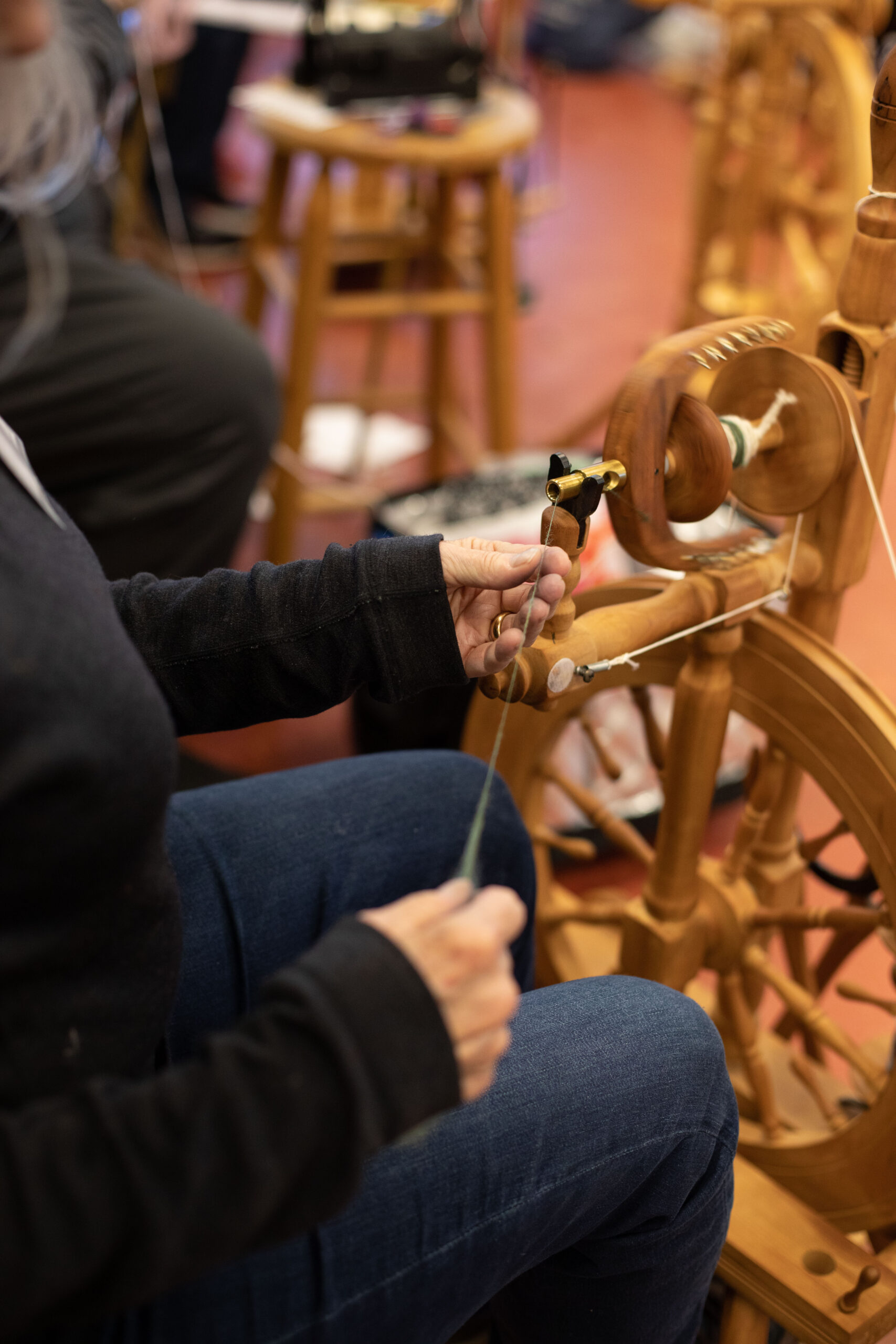
Spin It!
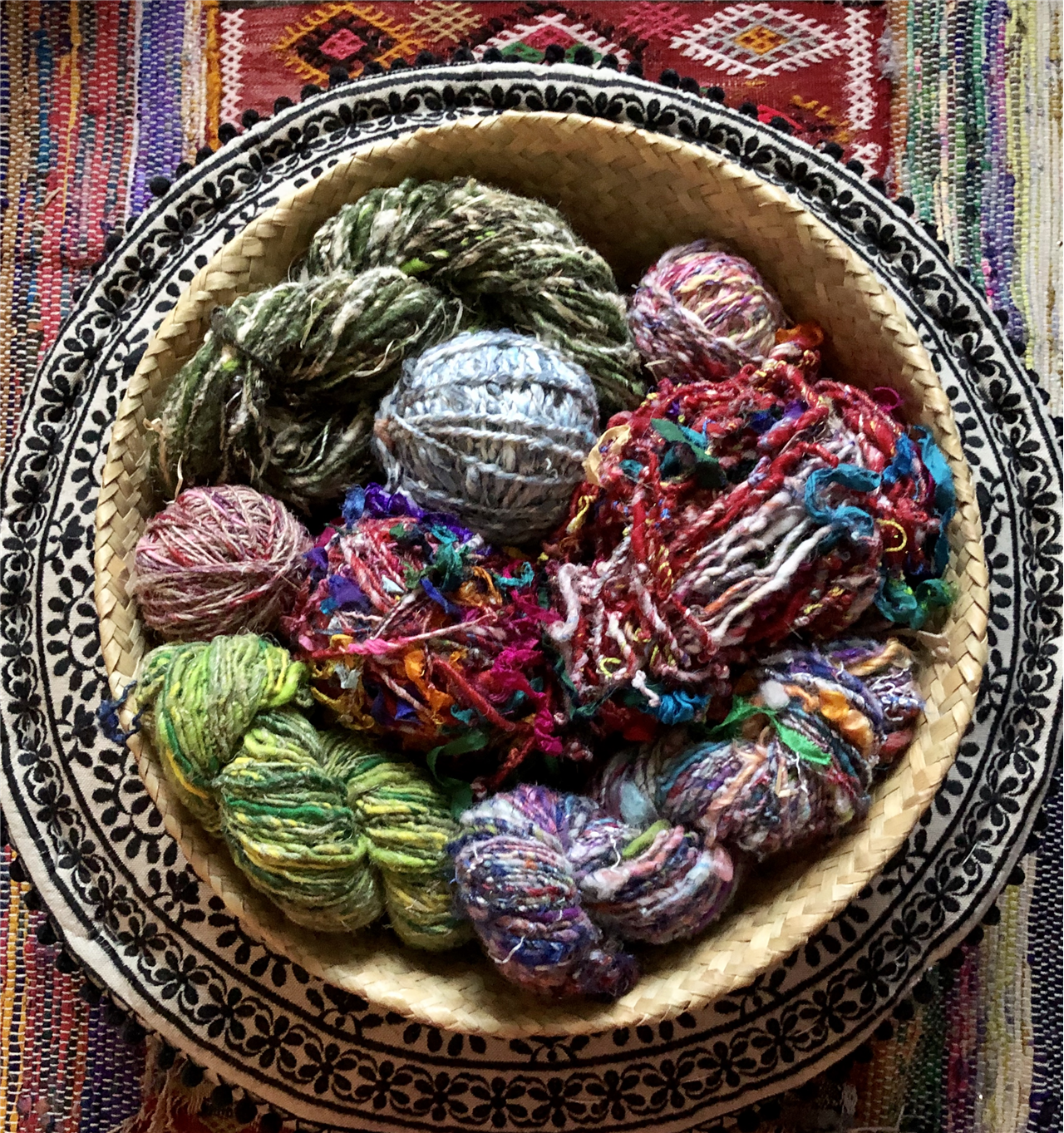
Dye It!
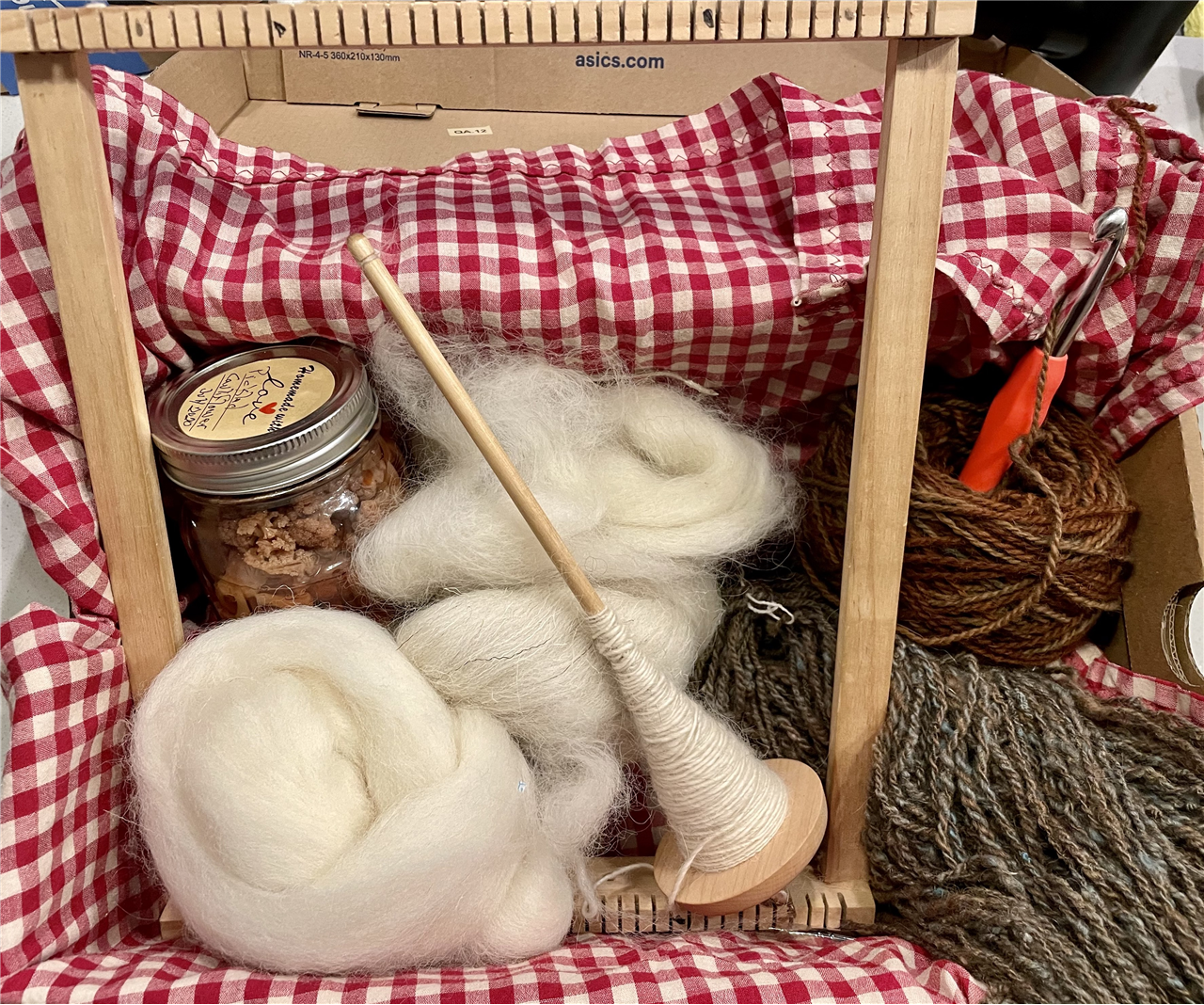
Work It!
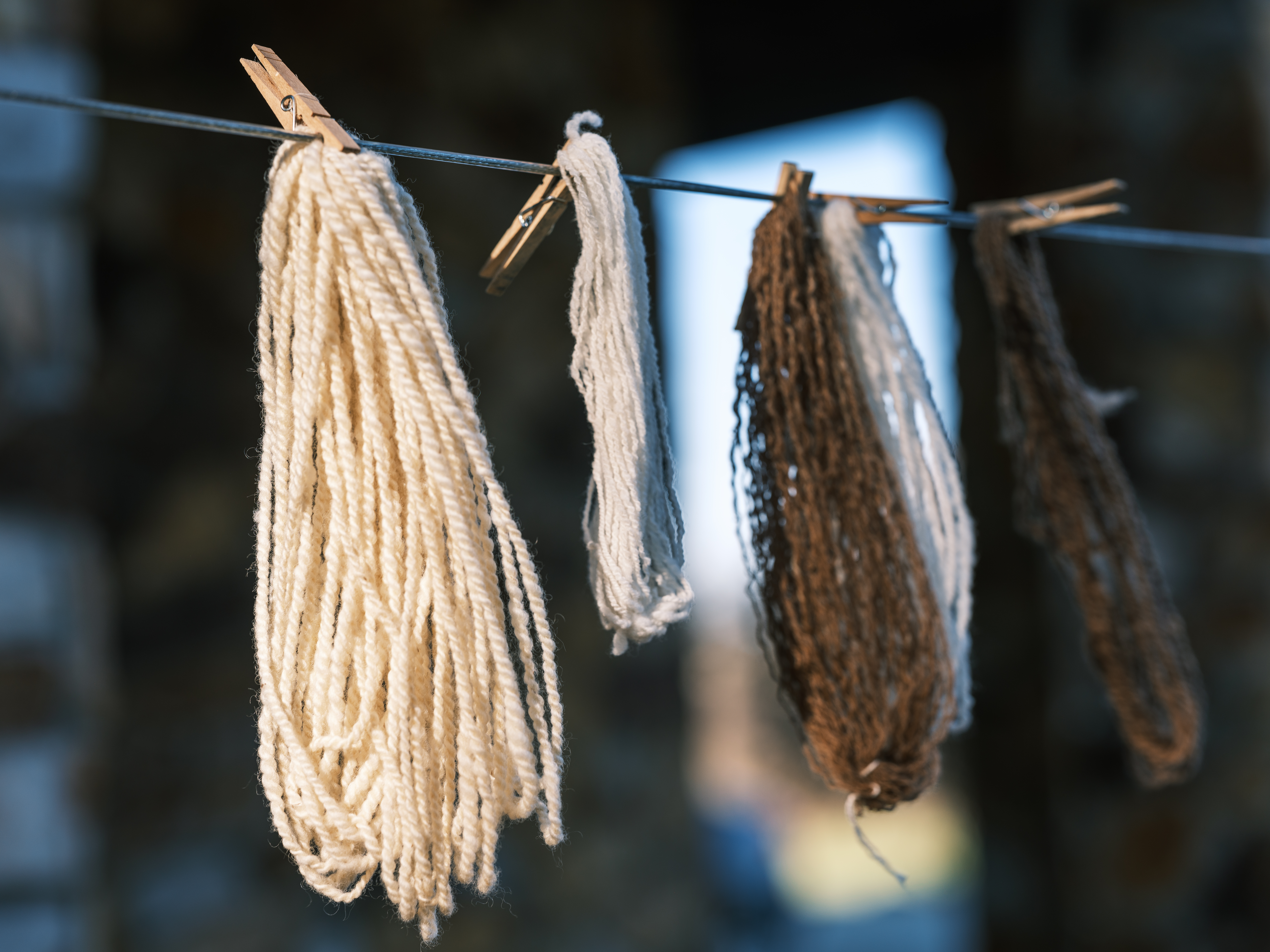
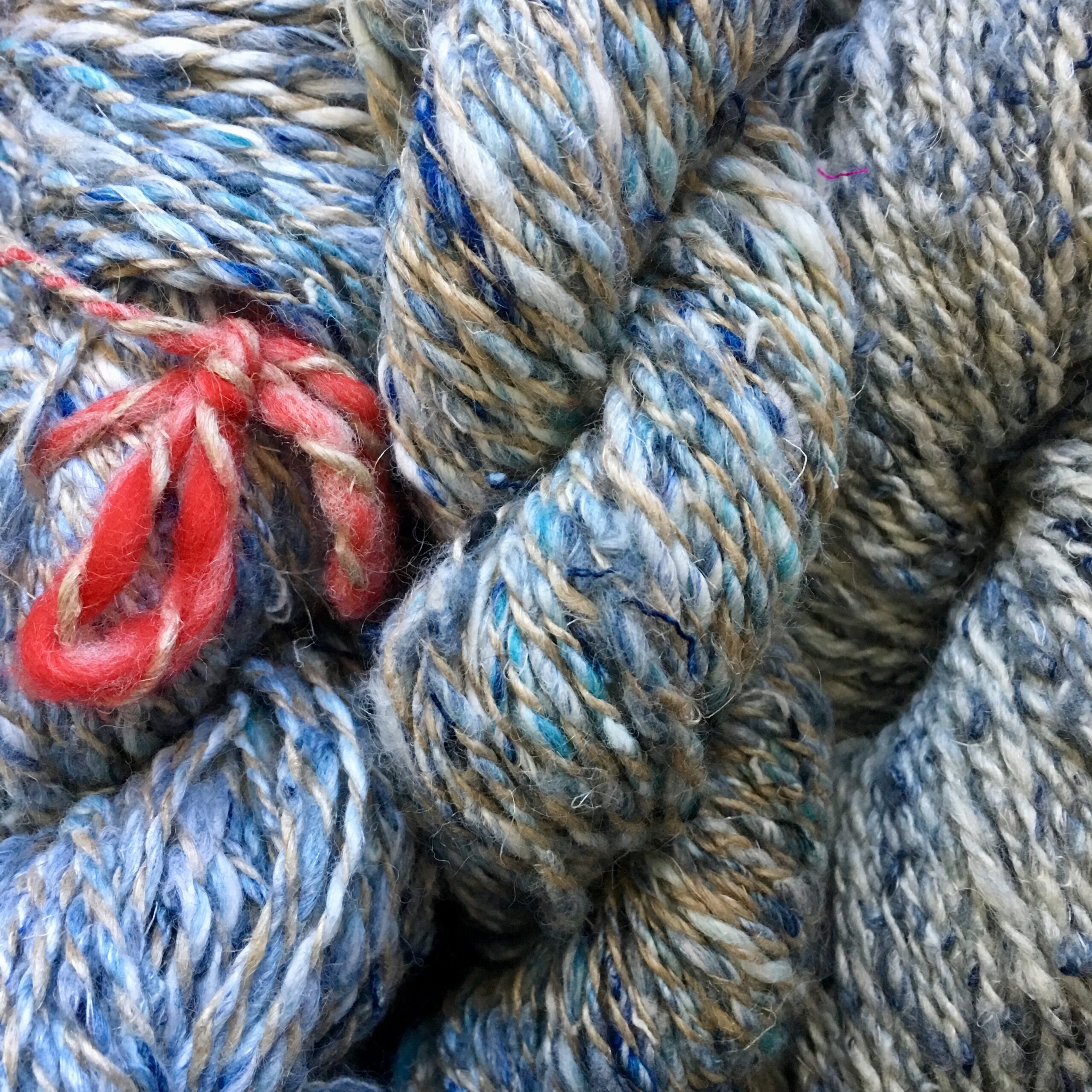
JCCFS: What can students expect to leave your class with?
GM: We’ll be teaching quite a number of skills in a relatively short amount of time so that students will finish the week with the abilities and materials needed to keep moving forward in fiber arts. They will have a spindle and fibers to keep spinning up yarn, yarns and cloth dyed in an array of colors to continue working into useful and decorative items, and an understanding of the histories and contemporary artistry of it all to start their own creative path. At the same time, we will be in a diverse group of people with differing backgrounds, skill sets, and experiences to share, making for a very enriching and inspiring environment. David and I love to teach in a group environment, getting to know everyone, and foster a spirit of shared creativity.
JCCFS: Where do you draw inspiration from for your work?
GM: I fell in love with spinning because it involves working with colors and textures – it is tactile as well as visual – so I find that much of my inspiration comes from things in nature. For example, I once saw a field of wild green grasses with a late summer tinge of gold and brown and I thought, “I wish I could just scoop it all up and spin it!” And when I returned home, I found myself blending plant fibers and wools dyed in greens and yellow and spun it into a yarn I call Country Grass.
DH: I am inspired by several things that often influence my work. I am attracted to Nature and the setting at the Folk School feeds that attraction. In Nature I find I’m drawn to the randomness and the anomalies that can be discovered on a walk. I am also influenced by my former career as a modern dancer and currently I am weaving with the wedge weave technique that allows explorations in color, design and improvisation on the loom.
JCCFS:What’s one accomplishment you’ve made recently that you are proud of, and why?
GM: Recently my spinning has shifted to using sustainable materials as I’ve been trying to bring attention to the urgent need to move towards environmentally friendly practices. My favorite yarn is made using denim reclaimed from garment manufacturing; wool from Florida Cracker sheep, a critically endangered breed; and hemp, a plant that needs no pesticides and improves the soil it grows in. When knitted or woven, it creates a fabric that looks like faded jeans. In our class, we’ll be learning about plant fibers used to make cloth, the fascinating history of sheep, and the sustainable aspects of using dyes.
DH: The current wedge weave that I am creating is making use of my own hand dyed yarns. I’m about to begin including my own hands-on yarns into a new weaving. I’m enjoying seeing how the colors relate beside each other and playing with different textures that I can weave with them.
JCCFS: What tips would you give a student or aspiring craftsperson? Anything you wish you had known earlier in your career?
GM: When I began spinning, I was was a mom with small children so my craft was done at home in a mostly solitary way. I wish I had known how enjoyable it is to spin in a circle of fellow enthusiasts or participate in a guild, and how this can lead to lovely friendships. These days you can learn almost anything via YouTube, but I would recommend learning fiber arts with others. Textile arts are worldwide so almost everyone, no matter where their families originate, has textile stories to share and enrich us.
DH: I think my best advise is to learn some about the life and practices of other artists from a variety of fields, but know that you are on your own path. It’s nice to find the similarities that you may share with these other artists but also to expect your own surprises along your journey.
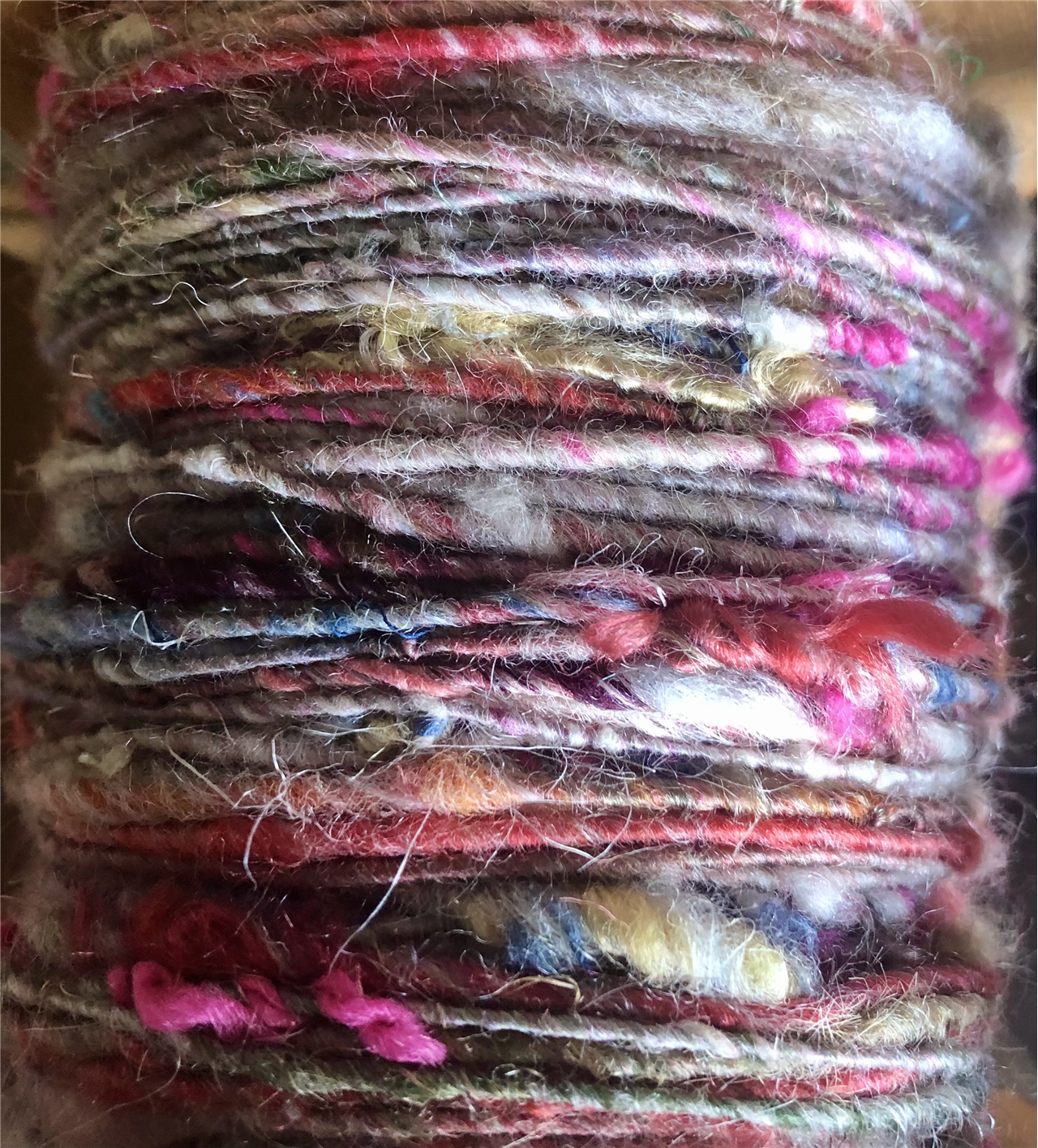
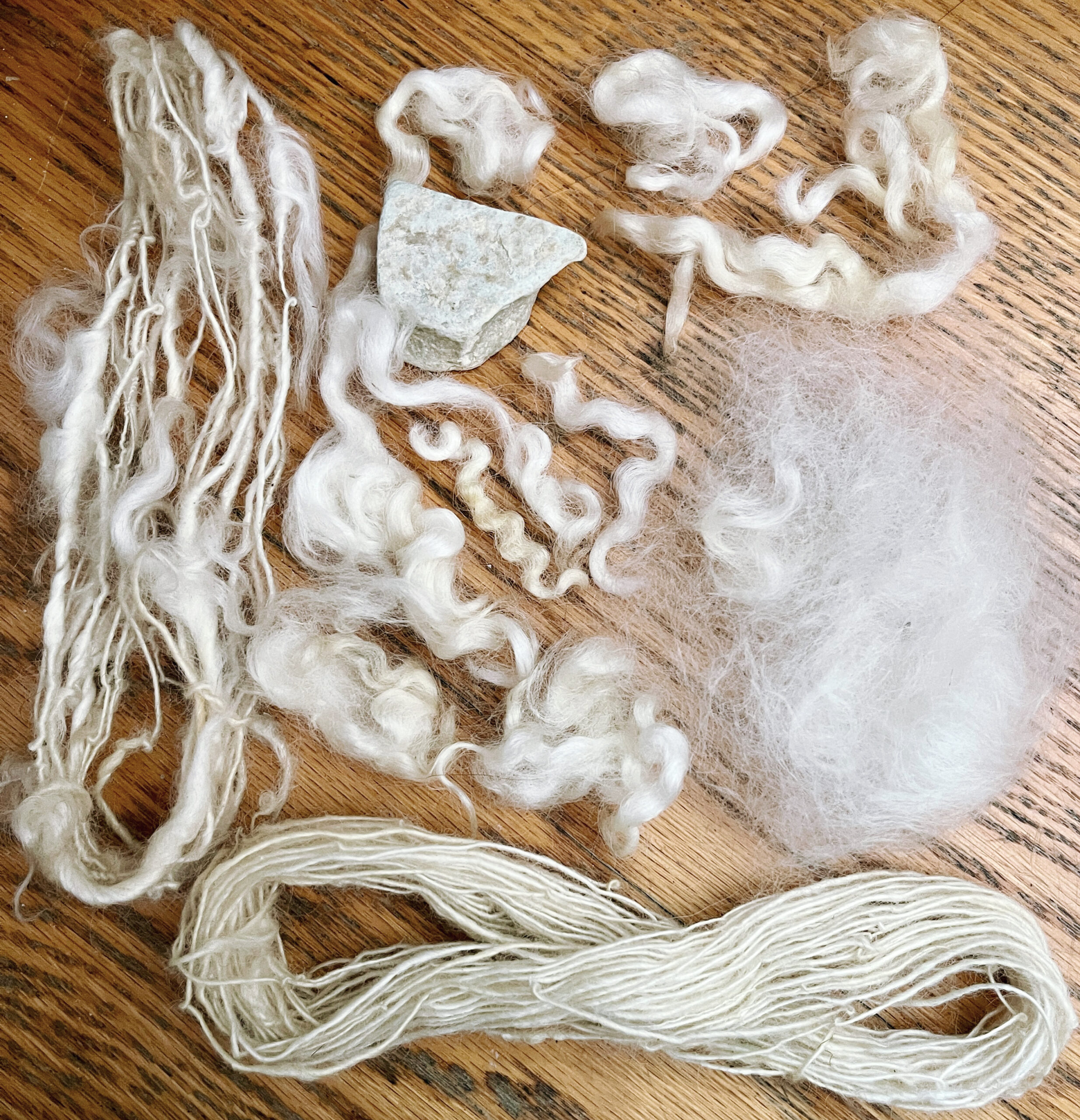
Upcoming Class with Gigi Matthews’ & David Heustess
Spin It! Dye It! Work It!: A Basket Full of Fiber Art
Join an adventure into the fundamentals of fiber art starting with a basket filled with a spindle, fibers, and a mason jar. Learn to spin sheeps wool and flax to make handspun yarn. Explore pulling colorful dyes from leaves, and flowers for yarn and cotton cloth. Try indigo and some synthetic dyes. See the results of your efforts; knit, crochet, embroider, weave your new colorful yarns into samples for future projects. All levels welcome.
Notice: This Class Has Passed. Please check out our other Spinning classes.
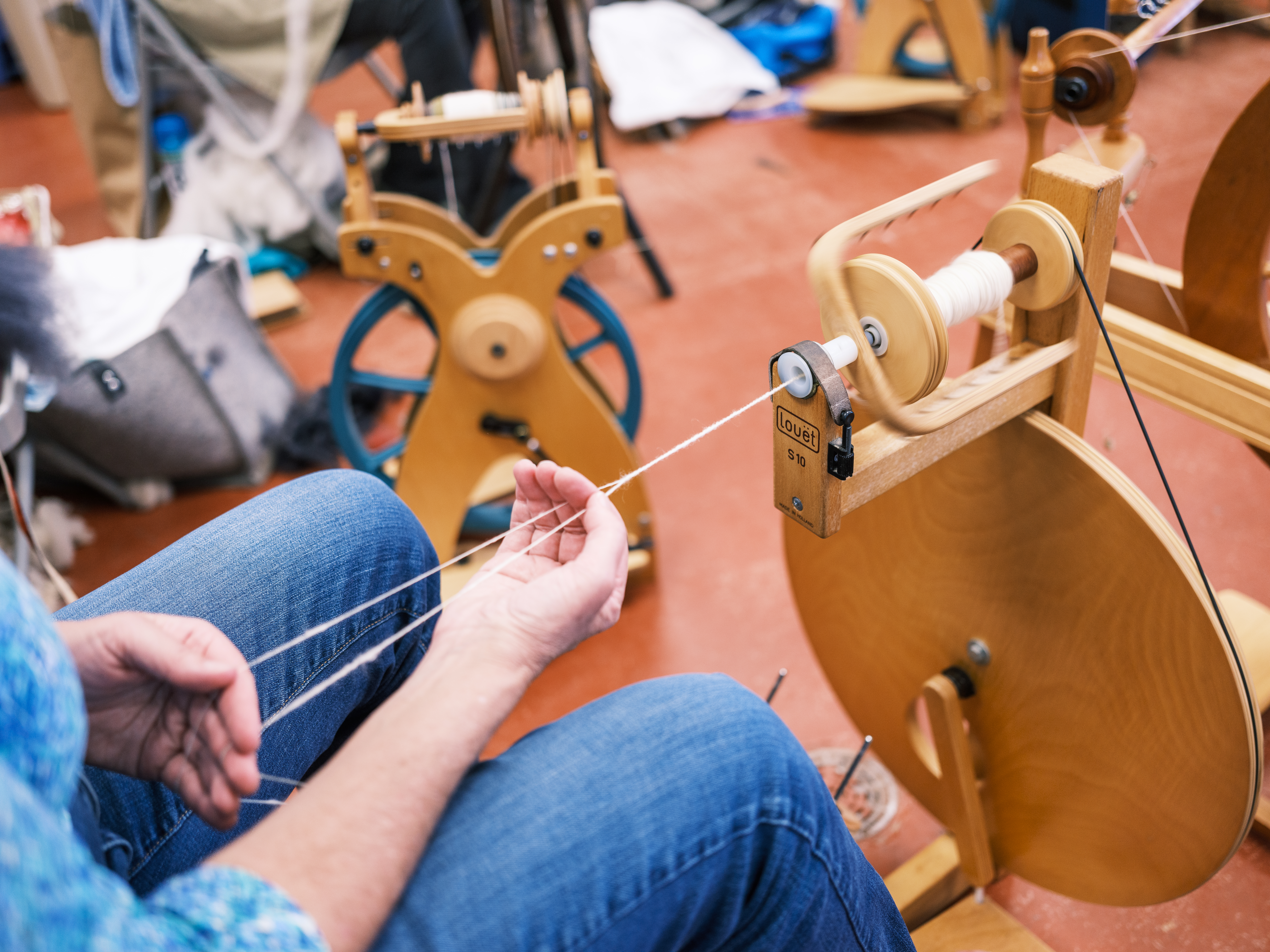
About Gigi Matthews’ & David Heustess
Gigi Matthews’ keen interest in fibers and textiles is the result of decades of travel to 30+ countries. A handspinning instructor and fiber artist, her yarns incorporate sustainable practices, utilizing reclaimed and upcycled materials, plant fibers, and wool from local and rare breed sheep. Gigi has published articles in Ply Magazine and Shuttle, Spindle & Dyepot and is on the board of the Handweavers Guild of America.
David Heustess is an artist and arts educator in Nashville, TN and his work makes use of clay, fiber arts and bead work. After many years of working as a modern dancer/teacher, David began pursuing his interest in pottery and other art mediums. He attended the Appalachian Center for Crafts and in 1995 he earned a BFA degree with studio concentrations in clay and fiber arts. Currently, David directs a gallery space and a community arts education program at Vanderbilt University.
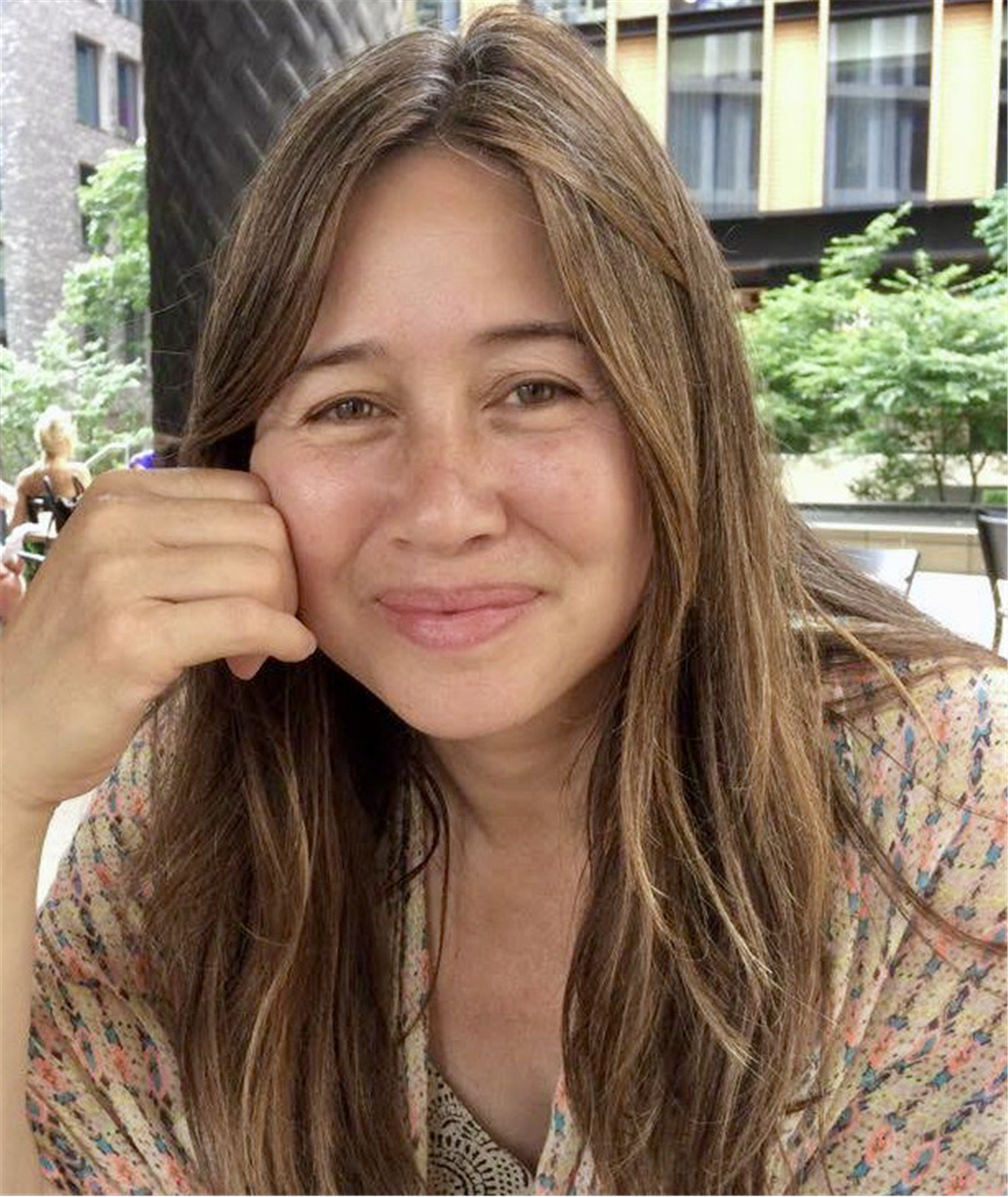



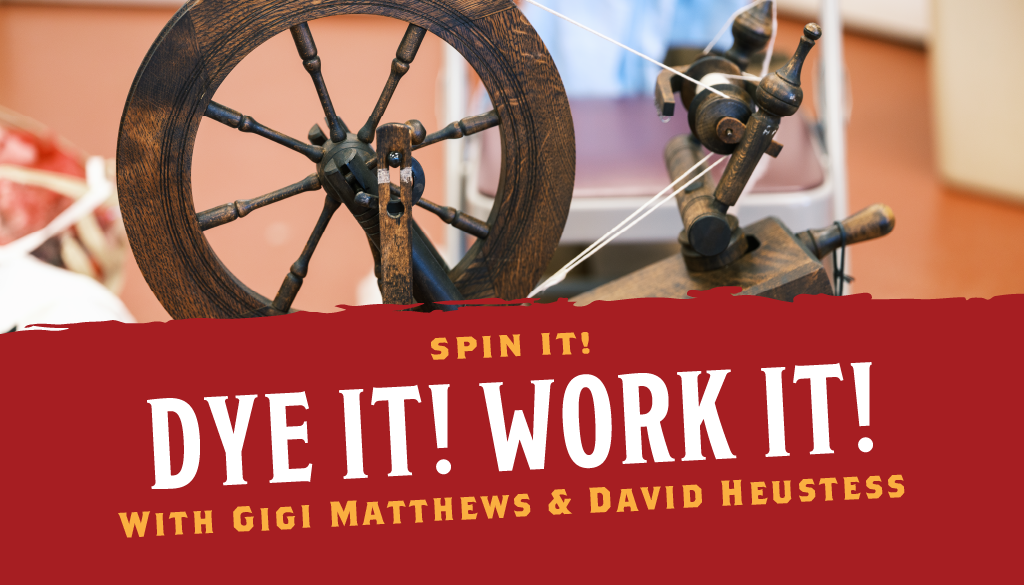
No Comments